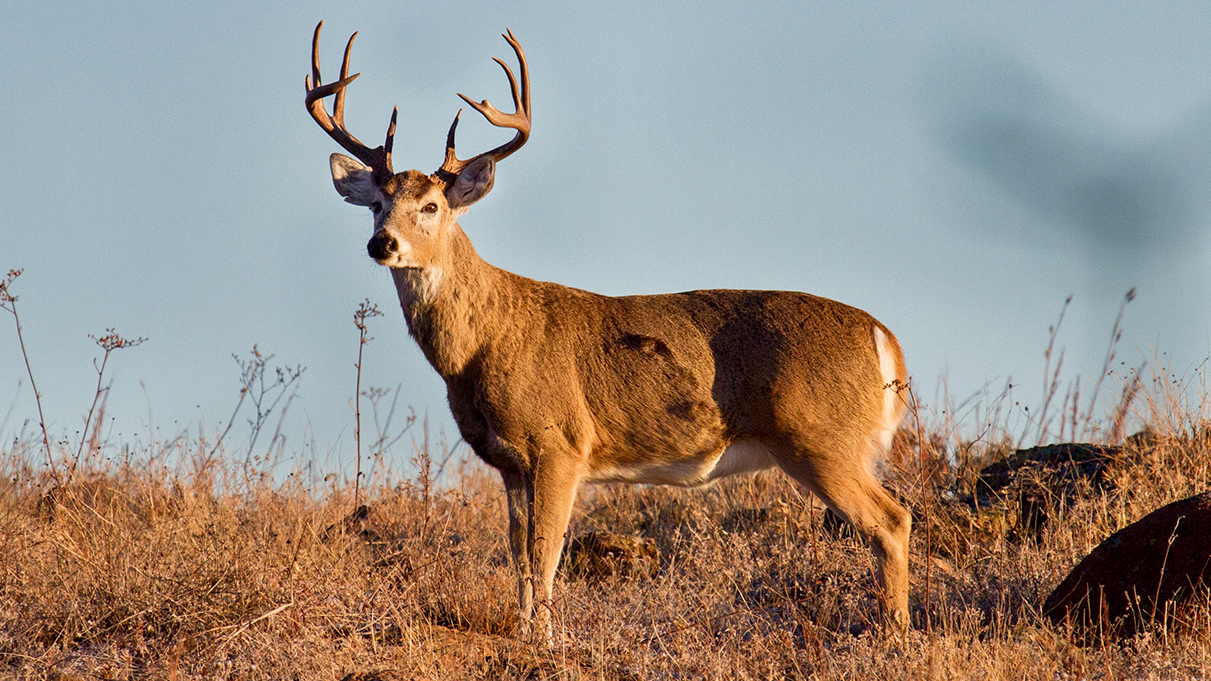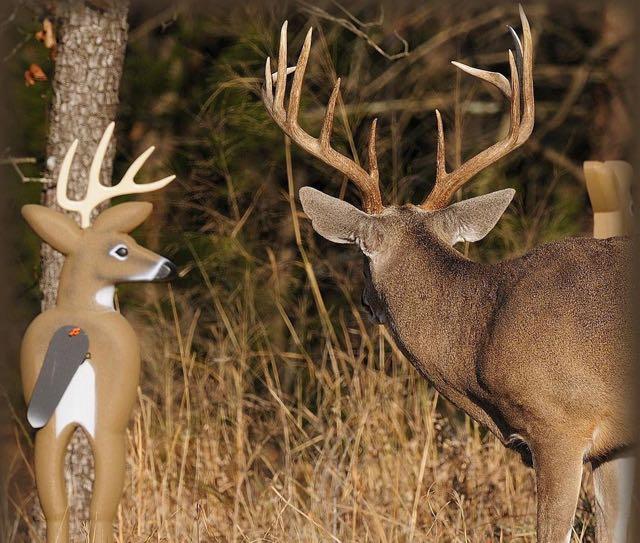THE ULTIMATE WHITETAIL CHALLENGE
7 crucial steps for successfully hunting the biggest trophy bucks
Advertisement
#4 Use Two Decoys
Want to see a monster buck lose control and charge into your set-up with hackles raised? Shake things up and try tandem decoys that mimic a buck tending a doe. Yes, it’s more trouble to haul two decoys into the field, but it’s worth the effort if it brings in the boss, or even treats you to a display from a feisty youngster. Besides, it’s no more effort than heading out on a goose hunt with a trailer or boat full of dekes. Plus, some deer decoys even break down, with all the components fitting into the body cavity for easier transport.
Advertisement
If your buck decoy comes with two sets of antlers, opt for the larger headgear when gunning for the biggest buck in the woods. I prefer decoys that feature lifelike tails and heads that pivot with the slightest breeze, as they bring life to an otherwise static scene. For safety’s sake, be sure to carry your decoys afield in blaze-orange bags, or wrap them in spare blaze vests. And make sure you only handle the decoys while wearing clean gloves to help keep them scent-free.
At your set-up, place the decoys in an open area so that any approaching buck will spot them from at least 40 yards out, reducing the chance of him bumping into them at close range and getting spooked. Place the decoys six feet apart, with the buck looking toward the doe to create a realistic tending scene.
Once your dekes are in place, get in your blind or treestand and try a calling sequence to start the show. And don’t be call-shy. Using a variable grunt tube, make a short buck contact grunt, wait two seconds, then make a doe bleat. Wait 30 seconds more, then follow up with an elongated tending grunt and sit tight for 20 minutes. If a buck arrives but acts hesitant, follow up with an aggressive snort-wheeze, which is not to be confused with a deer alarm snort. (For more on buck vocalizations, go to www.outdoorcanada.ca/deercalls.)
Advertisement
When approaching your set-up, a buck will try to circle downwind. To seal the deal, then, the most important detail is to position your decoys so that the buck walks into range before he arrives downwind. Before you head out, check the forecast for the wind direction so you can place your decoys accordingly. And if you’re bowhunting, remember that a buck will approach the male decoy head-on or the female decoy from behind, so position the pair to give you a clean shot at the buck’s vitals.


